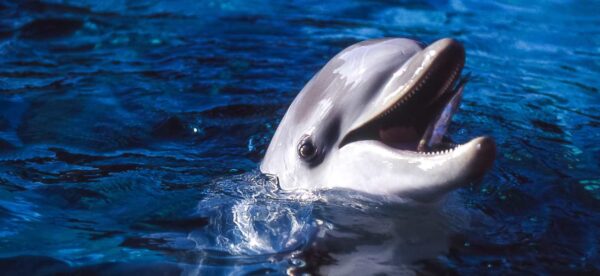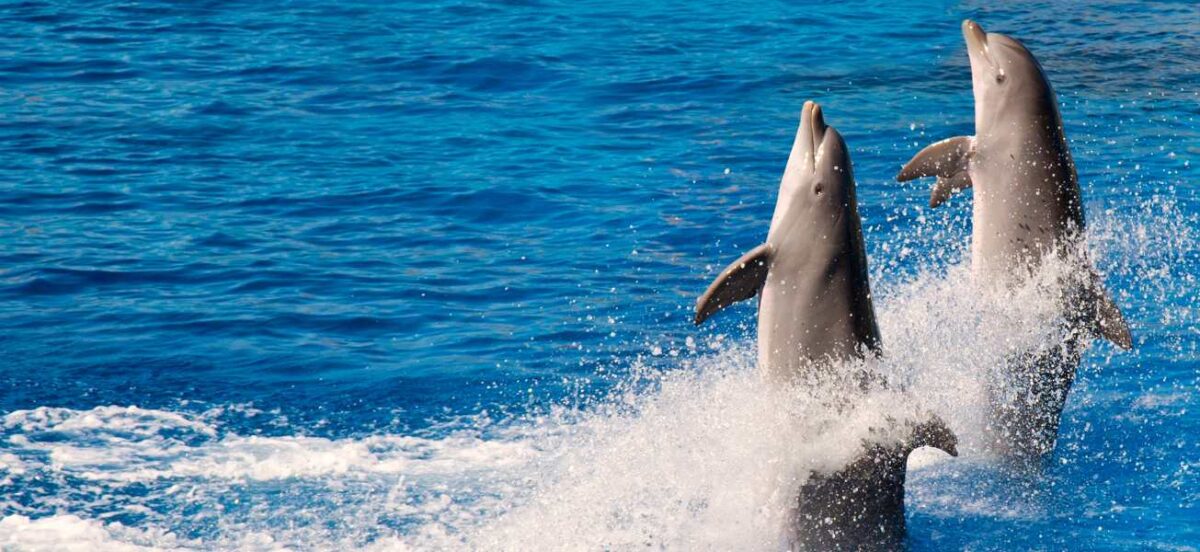What are the legislative changes?
The amendments to the General Wildlife Law have far reaching implications for captive marine mammals in Mexico.
Marine mammals, such as dolphins, sea lions and orcas, cannot be exhibited in fixed shows, travelling shows or therapy programs. Restrictions on human-animal interactions will also be introduced. While all ‘swim with’ dolphin experiences aren’t banned, touching sensitive areas will be prohibited. The only exceptions to ‘exhibiting dolphins’ are activities strictly related to scientific research, conservation or accredited education.
In a significant and welcome move for dolphins, Mexico has also introduced a breeding ban. Captive reproduction of dolphins is forbidden unless expressly authorised as part of a recovery or reintroduction project. Importantly, these facilities who hold dolphins captive are barred from acquiring new individuals by capture, import or birth. It means the current population of dolphins living in tanks will be the last generation in captivity in Mexico.
Sadly, many dolphins currently exploited for tourism can never be rehabilitated and reintroduced into the wild. That’s why facilities who hold dolphins captive must guarantee lifetime care for animals already under their responsibility. Authorities are responsible for ensuring dolphins live their lives in enriched conditions.
The reforms also go further, mandating relocation of captive dolphins from concrete tanks to open-water sea pens within 18 months, “where technically feasible”. Where this cannot be done, dolphins must remain in open systems that receive water exchange from the natural environment.
Stricter enforcement and sanctions have also been introduced. Breaches of these reforms will attract administrative fines and loss of wildlife-handling licences. Criminal penalties remain available under separate cruelty statutes.
The decree amends Articles 47 Bis 4, 60 Bis, 122 and 127 of the General Wildlife Law. The decree has passed unanimously in both chambers and will become law soon after the President signs it.

What do the changes mean for dolphins in captivity?
Mexico is home to one of the world’s largest dolphinaria networks. Animal-welfare organisation Animal Heroes estimates that more than 350 bottlenose dolphins are held across 27 facilities nationwide, with the densest cluster in Quintana Roo’s resort corridor. Congress estimates this equates to 8% of the world’s captive dolphins.
For the dolphins who will remain in captivity, the performance ban seeks to address behavioural and health issues documented in captive interaction settings. To learn more about the curse of captivity, click here.
Importantly, the breeding ban breaks the cycle of captivity. This means generation after generation of dolphins in Mexico will no longer be born into a life of confinement and deprived of natural behaviours.
Ongoing oversight by authorities will be crucial to ensure facilities implement and maintain the highest welfare standards for dolphins in captivity.
What do the changes mean for dolphin captivity worldwide?
Mexico’s decision will resonate far beyond its own resorts because it will hopefully phase out a lucrative captive marine mammal market within a generation. By restricting public dolphin shows and banning captive breeding, the country is helping phase out the lucrative captive marine mammal industry—potentially within a generation. It’s part of a powerful global shift, joining countries like Canada, Costa Rica, and Chile that have already taken action to outlaw dolphin captivity.
Each new ban removes a sizeable demand for wild-caught dolphins and prevents the stressors associated with captive breeding, transport and display.
Scientific committees under the Convention on Migratory Species have already urged member states to transition unreleasable dolphins to sea-pen sanctuaries. We hope that Mexico’s move will encourage more countries to follow suit.
Mexico’s stance demonstrates how sustained public pressure and shifting consumer sentiment can create meaningful, generational change for captive animals, and help create a world where no more dolphins are born into a life of suffering in tanks.
Their decision sends a powerful message: a world that no longer accepts cruelty to dolphins is already taking shape. With every country that chooses compassion over captivity, that future draws closer. When governments take bold steps like this, they’re often responding to a growing wave of public awareness and pressure. That’s why your voice and your choices matter more than ever.
How can you maintain momentum?
Here’s how you can help keep up the momentum for countries to end the captivity of dolphins:
- Don’t support the curse of captivity: Pledge not to attend marine parks with captive dolphins.
- Help spread the word: Share the realities for dolphins trapped in tanks with your family and friends and encourage them to make their own pledge.
Sources
- Mexico News Daily, Mexican Senate unanimously approves ban on dolphin shows, available here.
- Informador MX, Everything you need to know about the marine animal protection law, available here.
- Humane World for Animals, Mexican Senate votes to end use of captive marine mammals for entertainment and moves one step closer to a ban, available here.
- Expansion Politica, Deputies approve Mincho Law to ban dolphin shows, available here.
- World Animal Protection, Mexico bans dolphin shows in historic win for animal welfare, available here.
- France 24, Mexican lawmakers vote to ban dolphin shows, available here.
